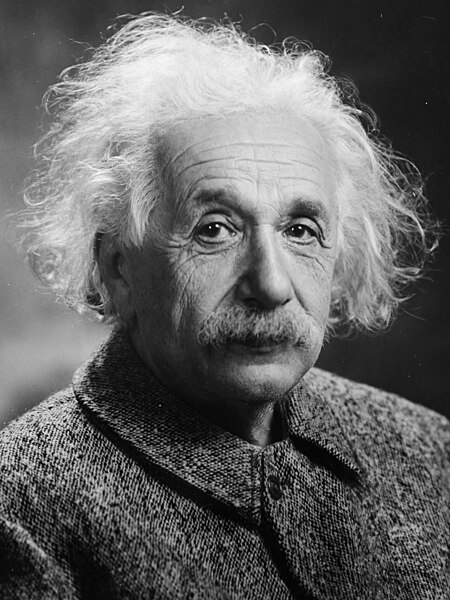The Courageous Path to Extending People’s Thinking, Boundaries, and Capabilities
Unlocking the Potential of Effective Leadership
Leadership is a fundamental concept in human interaction and progress. It is a process of influencing people towards achieving a common goal, and it plays a critical role in personal and organizational growth. Effective leadership is not just about giving orders or being in charge; it is about inspiring and motivating people to be the best versions of themselves.
Leadership requires courage because it involves challenging people’s perspectives, pushing them out of their comfort zones, and helping them develop new skills and abilities. A true leader is someone who is willing to take risks and overcome challenges to create a better future for themselves and those around them. In this article, we will explore the concept that “Leadership is the courage to extend people’s thinking, boundaries, and, ultimately, capabilities so they become the best versions of themselves.”
Leadership is about more than just achieving goals; it is about inspiring and empowering people to become the best versions of themselves. This means that leaders must have the courage to challenge people’s thinking, push them out of their comfort zones, and help them develop new skills and abilities. The best leaders are those who inspire and motivate their followers to achieve their full potential, both individually and as part of a team.
Effective communication is critical in leadership. Leaders must be able to communicate their vision and goals clearly and effectively to their followers. They must be able to listen actively to the ideas and concerns of their followers and provide feedback that encourages growth and development. Effective communication also means that leaders must be able to adapt their communication style to the needs and preferences of their followers.
Leadership styles vary, and the style that works best depends on the situation and the followers involved. Some leadership styles are more directive, while others are more collaborative. Some leaders are more focused on task accomplishment, while others are more concerned with the well-being of their followers. Regardless of the style, effective leadership requires a focus on the needs and goals of the followers, as well as the goals of the organization.
Leadership is a critical concept in personal and organizational growth. Effective leaders have the courage to extend people’s thinking, boundaries, and capabilities so that they can become the best versions of themselves. This requires effective communication, the ability to adapt to different situations and followers, and a focus on the needs and goals of the followers and the organization. The best leaders are those who inspire and motivate their followers to achieve their full potential, both individually and as part of a team.
Understanding the Concept of Leadership
Leadership is a process of influencing people towards achieving a common goal. Effective leadership requires not only the ability to motivate and inspire others but also the ability to communicate a clear vision and strategy for achieving that goal.
One of the essential aspects of effective leadership is the ability to communicate effectively. Leaders must be able to articulate their vision and goals in a way that inspires and motivates their followers. They must also be able to listen actively to the ideas and concerns of their followers and provide feedback that encourages growth and development.
Leadership styles vary, and the style that works best depends on the situation and the followers involved. The four main leadership styles are autocratic, democratic, laissez-faire, and transformational. Autocratic leaders make decisions independently, while democratic leaders involve their followers in decision-making. Laissez-faire leaders give their followers a great deal of freedom and autonomy, while transformational leaders inspire and motivate their followers to achieve their full potential.
Effective leaders must also be adaptable. They must be able to adjust their leadership style to fit the needs and preferences of their followers. For example, a leader who is more directive may need to become more collaborative when working with a team of highly skilled professionals. Similarly, a leader who is more focused on task accomplishment may need to become more concerned with the well-being of their followers when dealing with a team under stress.
Another important aspect of effective leadership is the ability to build relationships with followers. Leaders who are empathetic, authentic, and transparent tend to have more loyal and committed followers. Building relationships with followers also involves the ability to create a sense of trust and psychological safety. When followers feel that their leader has their best interests at heart, they are more likely to be motivated and engaged in their work.
Effective leadership is a complex process that involves the ability to communicate a clear vision and strategy, adapt to different situations and followers, build relationships with followers, and create a sense of trust and psychological safety. Leaders who are able to inspire and motivate their followers towards achieving a common goal are essential to personal and organizational growth. Effective leadership is not just about giving orders or being in charge; it is about empowering people to become the best versions of themselves.
The Courage to Extend People’s Thinking
One of the key aspects of effective leadership is the ability to extend people’s thinking. This means challenging their perspectives and beliefs, and encouraging them to explore new ideas and possibilities. Leaders who can extend their followers’ thinking can help them see things from new perspectives, which can lead to personal and organizational growth.
Extending people’s thinking requires active listening and questioning. Leaders must be willing to listen to their followers’ ideas and concerns, and ask probing questions to help them think through their assumptions and biases. This means creating a safe space where followers feel comfortable sharing their thoughts and ideas without fear of judgment or retribution.
Leaders who extend their followers’ thinking also help them to develop critical thinking skills. By encouraging followers to explore new ideas and perspectives, leaders can help them develop the ability to analyze complex problems and make informed decisions. This can lead to more innovative solutions and better outcomes for the organization.
Extending people’s thinking also involves modeling the behavior you want to see in others. Leaders who are willing to challenge their own thinking and admit their mistakes can inspire their followers to do the same. This creates a culture of continuous learning and improvement, where everyone is encouraged to seek out new knowledge and ideas.
The benefits of extending people’s thinking for personal and organizational growth are numerous. By challenging their assumptions and beliefs, followers can develop a more open-minded and flexible approach to problem-solving. This can lead to more innovative solutions and better outcomes for the organization. Extending people’s thinking can also help to create a culture of learning and continuous improvement, where everyone is encouraged to seek out new knowledge and ideas.
Extending people’s thinking is a critical aspect of effective leadership. Leaders who are willing to challenge their followers’ perspectives and encourage them to explore new ideas and possibilities can help to create a culture of learning and continuous improvement. By developing critical thinking skills and promoting open-mindedness, leaders can help their followers to become the best versions of themselves, which can lead to personal and organizational growth.
The Courage to Extend People’s Boundaries
Another important aspect of effective leadership is the ability to extend people’s boundaries. This means pushing them out of their comfort zones and encouraging them to take risks and explore new opportunities. Leaders who can extend their followers’ boundaries can help them to develop resilience, adaptability, and a growth mindset.
Extending people’s boundaries requires a willingness to take risks and try new things. Leaders must be willing to experiment with new approaches and be open to the possibility of failure. This means creating a culture of psychological safety, where followers feel supported and encouraged to take risks and try new things.
Leaders who extend their followers’ boundaries also provide them with opportunities to learn and grow. This means challenging them with new tasks and responsibilities, and providing them with feedback and support as they navigate new challenges. By providing followers with opportunities to develop new skills and abilities, leaders can help them to become more adaptable and resilient.
Extending people’s boundaries also involves recognizing and addressing any barriers or challenges that may be holding them back. This may involve addressing issues such as fear of failure, lack of confidence, or imposter syndrome. By providing followers with the tools and support they need to overcome these barriers, leaders can help them to achieve their full potential.
The benefits of extending people’s boundaries for personal and organizational growth are significant. By pushing followers out of their comfort zones, leaders can help them to develop resilience and adaptability, which are critical skills in today’s fast-changing world. Extending people’s boundaries can also lead to increased creativity and innovation, as followers are encouraged to explore new ideas and possibilities.
Extending people’s boundaries is a critical aspect of effective leadership. Leaders who are willing to take risks and try new approaches, and who provide their followers with opportunities to learn and grow, can help them to develop resilience and adaptability. By addressing any barriers or challenges that may be holding their followers back, leaders can help them to achieve their full potential and create a culture of continuous improvement.
The Courage to Extend People’s Capabilities
Another essential aspect of effective leadership is the ability to extend people’s capabilities. This means helping them to develop new skills and abilities, and providing them with opportunities for growth and development. Leaders who can extend their followers’ capabilities can help them to achieve their full potential, which can lead to personal and organizational growth.
Extending people’s capabilities requires a willingness to invest in their development. Leaders must be willing to provide their followers with the resources, tools, and support they need to develop new skills and abilities. This may involve providing training and development programs, mentoring and coaching, or opportunities for job shadowing and cross-functional collaboration.
Leaders who extend their followers’ capabilities also provide them with opportunities to take on new challenges and responsibilities. This means delegating tasks and responsibilities and providing them with the autonomy and support they need to succeed. By giving followers the opportunity to stretch themselves and take on new challenges, leaders can help them to develop new skills and abilities and build their confidence.
Extending people’s capabilities also involves recognizing and leveraging their strengths. Leaders must be able to identify their followers’ unique strengths and abilities and provide them with opportunities to use these strengths to achieve their goals. By focusing on their strengths, followers are more likely to feel engaged and motivated, which can lead to better performance and outcomes.
The benefits of extending people’s capabilities for personal and organizational growth are significant. By helping followers to develop new skills and abilities, leaders can create a more agile and adaptable workforce. This can lead to increased innovation and creativity, as followers are better able to contribute to the organization’s goals. Extending people’s capabilities can also lead to increased job satisfaction and engagement, as followers are more likely to feel challenged and fulfilled in their roles.
Extending people’s capabilities is a critical aspect of effective leadership. Leaders who are willing to invest in their followers’ development, provide them with opportunities to take on new challenges and responsibilities, and leverage their strengths can help them to achieve their full potential. By developing a workforce that is agile, adaptable, and engaged, leaders can create a culture of continuous improvement and drive personal and organizational growth.
Challenges of Leadership
Leadership is not without its challenges. Effective leadership requires a great deal of resilience, adaptability, and emotional intelligence. Leaders must be able to overcome resistance to change and innovation, deal with failure and setbacks, and maintain focus and motivation in the face of adversity.
Resistance to change and innovation is a common challenge that leaders face. Followers may be hesitant to try new approaches or may be resistant to change because they feel comfortable with the status quo. Effective leaders must be able to overcome this resistance by communicating the benefits of the change and providing support and resources to help their followers make the transition.
Dealing with failure and setbacks is another challenge that leaders face. Leaders must be able to help their followers navigate failure and learn from their mistakes. This requires creating a culture of psychological safety, where followers feel supported and encouraged to take risks and try new things. Leaders must also be able to provide constructive feedback and support to help their followers learn from their mistakes and develop resilience.
Maintaining focus and motivation in the face of adversity is another challenge that leaders face. Leaders must be able to maintain their own focus and motivation, as well as that of their followers, even in the face of setbacks or difficult circumstances. This requires strong emotional intelligence and the ability to manage stress and uncertainty effectively.
Another challenge that leaders face is managing diversity and inclusion. Effective leaders must be able to create a culture of inclusion, where everyone feels valued and respected. This means recognizing and addressing any biases or barriers that may be present, and ensuring that everyone has equal access to opportunities for growth and development.
Leadership is not without its challenges. Effective leaders must be able to overcome resistance to change and innovation, deal with failure and setbacks, maintain focus and motivation in the face of adversity, and manage diversity and inclusion. By developing strong emotional intelligence, resilience, and adaptability, leaders can navigate these challenges and create a culture of continuous improvement and growth.
Nurturing Growth and Success through Effective Leadership
Leadership is a critical concept in personal and organizational growth. Effective leadership requires courage, the ability to communicate a clear vision and strategy, adaptability, building relationships, and creating a culture of trust and psychological safety.
Leadership is not just about achieving goals; it is about inspiring and empowering people to become the best versions of themselves. The best leaders are those who extend people’s thinking, boundaries, and capabilities so they can achieve their full potential.
Extending people’s thinking requires active listening, questioning, and creating a safe space where followers feel comfortable sharing their thoughts and ideas. Leaders who can extend their followers’ thinking can help them develop critical thinking skills, which can lead to more innovative solutions and better outcomes for the organization.
Extending people’s boundaries requires a willingness to take risks and try new things. Leaders who can extend their followers’ boundaries can help them to develop resilience, adaptability, and a growth mindset. By pushing followers out of their comfort zones and providing them with opportunities to learn and grow, leaders can help them to achieve their full potential and create a culture of continuous improvement.
Extending people’s capabilities requires a willingness to invest in their development, provide them with opportunities to take on new challenges and responsibilities, and recognize and leverage their strengths. Leaders who can extend their followers’ capabilities can create a more agile and adaptable workforce, which can lead to increased innovation, creativity, and job satisfaction.
Effective leadership is not without its challenges. Leaders must be able to overcome resistance to change and innovation, deal with failure and setbacks, maintain focus and motivation in the face of adversity, and manage diversity and inclusion. By developing strong emotional intelligence, resilience, and adaptability, leaders can navigate these challenges and create a culture of continuous improvement and growth.
In conclusion, effective leadership is critical for personal and organizational growth. By extending people’s thinking, boundaries, and capabilities, leaders can inspire and empower their followers to achieve their full potential. By overcoming challenges and building a culture of continuous improvement, leaders can create a more agile, adaptable, and engaged workforce, which can drive innovation, creativity, and success.






